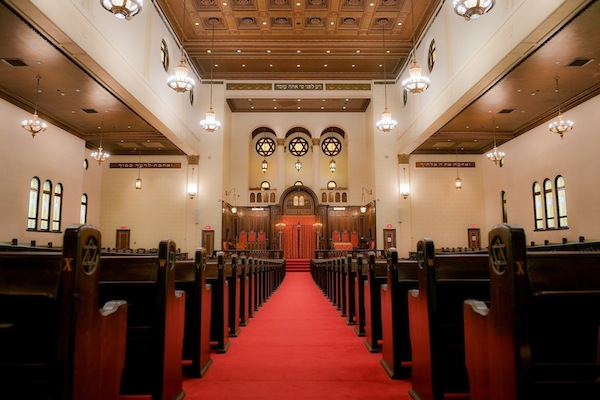Montreal’s Congregation Shaar Hashomayim has been at its Kensington Avenue home for 100 years. (photo by Lainie Berger / unsplash.com)
Montreal’s Congregation Shaar Hashomayim is 176 years old – and it has been in its current building for 100 years now. Among those who have attended the shul over its long history are Rav Abraham Isaac Kook (who was chief rabbi of British Mandate Palestine), former prime minister Pierre Elliott Trudeau and current Prime Minister Justin Trudeau, legendary musician Leonard Cohen and various members of the Bronfman family. Recently, the historic congregation made history, when it hired Rabba Rachel Kohl Finegold, the first Orthodox woman in Canada to become ordained.
“It remains a traditional synagogue that follows traditional Jewish law,” Finegold told the Independent. “Me being the first female member of the clergy may have been significant, but it only did so in complete consistency with halachah (Jewish law).”
Finegold was among the first group of female students to graduate from Yeshivat Maharat, which is located in the Bronx, N.Y., in 2013. She has chosen as her title the term rabba, although female rabbis exist in other streams of Judaism.
“I walk up to the bimah [pulpit] like my male colleagues, but I go back and sit in the female section, because our building is 100 years old and the bimah resides in the central/men’s part of the sanctuary,” she said. “That is just what the architecture allows.”
Shaar Hashomayim split off from Congregation Shearith Israel (also known as the Spanish and Portuguese Synagogue of Montreal) in 1846. Ashkenazi members – English, German and Polish Jews – wanted to practise rituals and observances more akin to what they were familiar with, rather than what was traditional for the Sephardim. In September 1922, Congregation Shaar Hashomayim moved to 450 Kensington Ave. in Westmount, where it resides to this day. After the Second World War, a school was added to accommodate the new families who had joined the congregation. Further expansion happened in 1967.
“This is among the most grand of Montreal’s synagogues. Their choir is simply like no other and the sound permeates the walls throughout during services,” said Lucy Verebes Shapiro, who, while not a member of Shaar Hashomayim, has visited the shul many times. “There is a notion of great importance about all that transpires within,” she said.
The synagogue cemetery also gets visitors, Jewish and non-Jewish, who are attracted by its denizens.
“I’m a Leonard Cohen fan and visit the cemetery every year on the anniversary of his death,” said Marta Etynkowski. “I’ve never met him, but his poetry and music have helped me through many deep, private, emotional moments throughout my life and it’s one of my biggest regrets that I never saw him while alive. It has become a bit of an annual tradition for many of his fans to pay their respects – some people leave mementos, some play his music there, others just have a private moment in front of his grave. It’s quite beautiful.”
Shaar Hashomayim has a long and rich music tradition. The services are centred around a cantor, who is accompanied by an all-male choir, the origin of which dates back to 1887.
Its museum – the Edward Bronfman Museum – holds much Judaica, including a shofar from Yemen and a few books that are centuries old. It features rotating exhibits and is open to the public.
“In the wake of the COVID pandemic, people often ask, are synagogues still relevant? I think that is because there is a misconception that synagogues are just a place of prayer alone,” said Finegold. “However, many synagogues, and ours in particular, offer a connection to community – that’s something people want. After being isolated and at home for so long, to know that there is a place that has so many doorways to access, is something that will keep the relevance and people coming in for years to come.”
Avi Kumar is an historian and freelance writer. He has lived in six countries and speaks 10 languages. His work has been published in many countries, from his native Sri Lanka to Israel and Ireland, and he has written on a variety of topics, including history, wildlife and linguistics.

